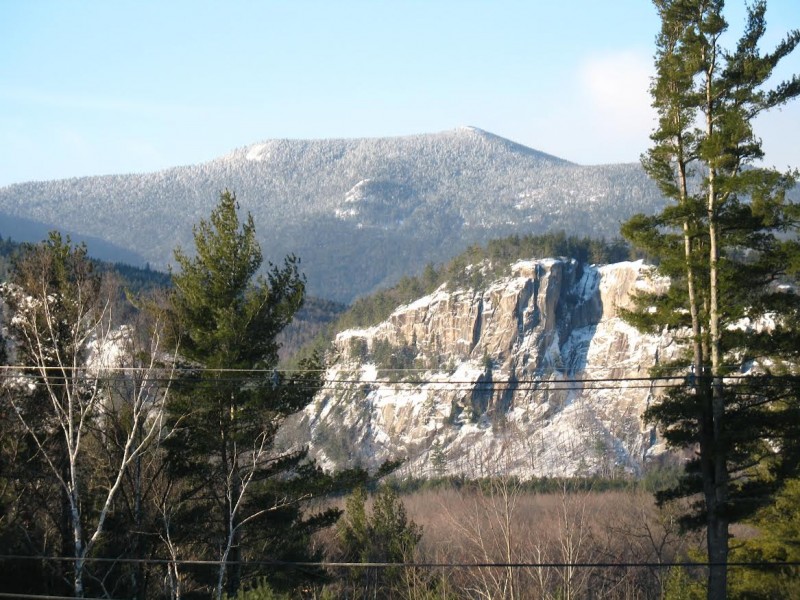
Cathedral Ledge with a dusting of snow. Image courtesy of Wwoods/Wikimedia Commons.
An accomplished rock climber fell to his death while climbing alone on some of the most popular ledges in the Northeast.
Brian Delaney, 56, of Scarborough, Maine died in a climbing accident on Cathedral Ledge in North Conway, New Hampshire on July 12.
Delaney fell about 65 feet from the top onto a ledge and sustained internal injuries and several broken bones.
He initially survived, was treated by rescuers, and was packaged into a litter but later succumbed to the injuries.
Delaney was using a technique known as “rope soloing” to protect himself from a fall as he ascended the cliff.
According to New Hampshire Fish and Game, Delaney was on a portion of Cathedral Ledge known as the Barber Wall, situated on the upper left of the cliff band and accessible via a footpath from the top of the cliff across ledges to the base of the wall.
The wall is described as a cliff from 60 to 175 feet high that has many classic crack climbs and thin face routes.
At approximately noon, a nearby climber witnessed Delaney complete his climb and shortly thereafter saw him fall from the top back down to the ledge where the climb begins. Nearby climbers came to his aid and called 911 for assistance.
“Somewhere during the transition of moving to another route or attempting to descend, he fell back down from the top of that cliff,” Alex Lopashanski, conservation officer for the New Hampshire Fish and Game Department, told the Portland Press Herald. “He was either preparing to descend or re-rigging lines when he fell.”

Cathedral Ledge is a popular New England climbing spot. Image courtesy of Mount Washington Valley Chamber of Commerce.
Lopashanski said Delaney had been standing in an area where it wouldn’t be likely for someone to just fall off. “Something happened, either while rigging or moving around that caused him to go down. There was no malfunction. He was connected to it,” he said of the safety harness and ropes Delaney had been using to secure himself.
“It didn’t arrest his fall based on the way it was connected,” Lopashanski said. It’s not clear exactly what went wrong.
“I interviewed witnesses and discussed it with other climbers. In the end, all we can really say for sure is something went wrong—either it was reconnected to the wrong piece of rope or he fell before he was ready to descend,” he continued.
Members of the Mountain Rescue Service and North Conway Fire and Rescue responded. Mountain Rescue Service members rigged safety lines along the ledges and guided fire and rescue members to the scene.
“It was a rough day,” Brad White, president of International Mountain Climbing School and one of the Mountain Rescue Service members who responded to the accident, told the Conway Daily Sun. “I’ve known Brian since 1976. He was one of the first guides I went out with.”
Delaney had been climbing by himself, using a fixed line for a belay, according to White, climbing near a route called Double Vee, a classic route rated 5.9 on the Yosemite Decimal Scale. He was near the top of the wall when he fell, White said, and something in his belay system failed.
“He obviously just leaned back and went the whole way,” White said, but no one is sure exactly what in his belay system failed. Another group was nearby, but they didn’t see anything until they heard Delaney’s body hit the rocks at the base of the climb.
Delaney’s climbing experience spanned decades. He not only climbed in the White Mountains but in other places including El Capitan in California’s Yosemite National Park.
 Your Privacy Choices
Your Privacy Choices
 The
The